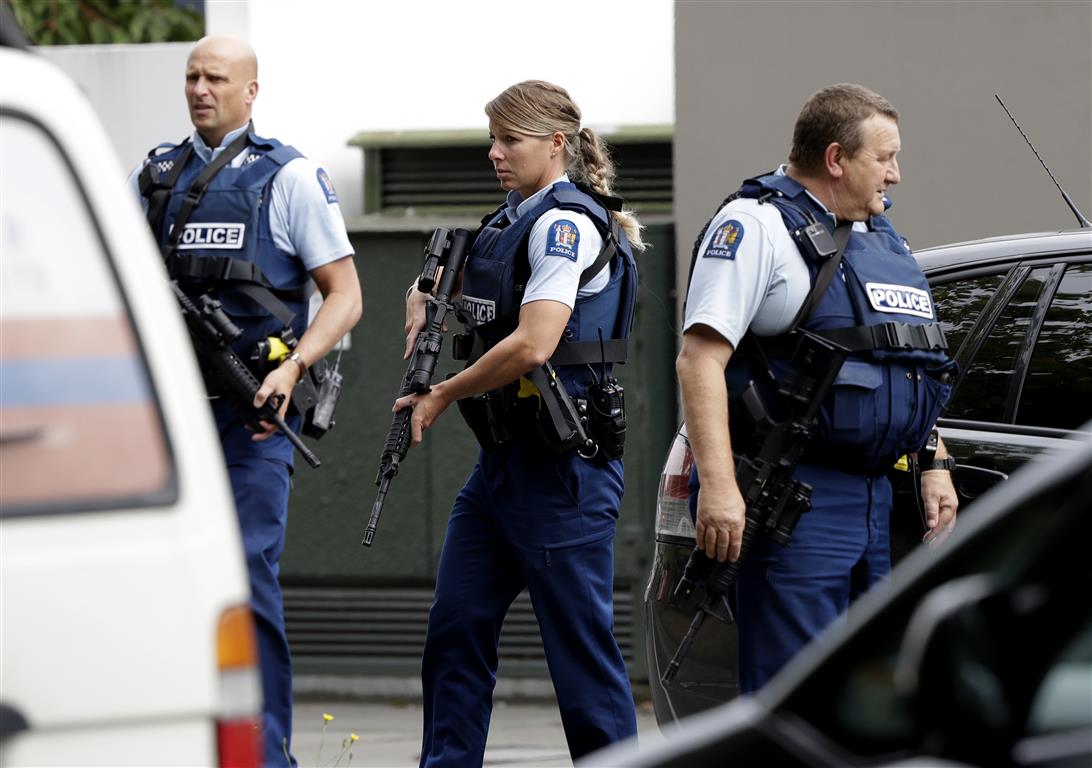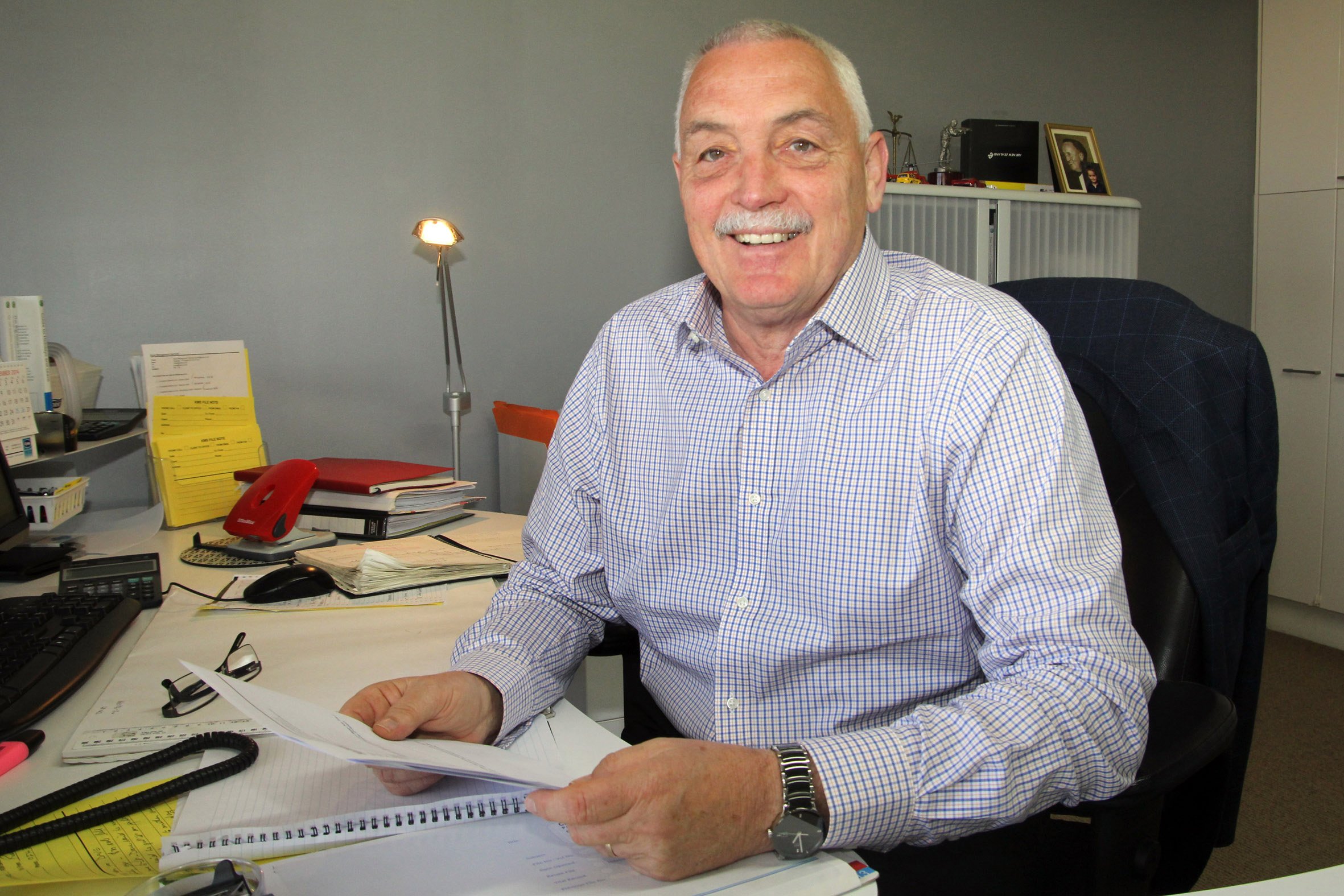
Speaking exclusively to The Christchurch Star, Mike Kyne said the two officers who apprehended the accused mosque gunman in Christchurch's Brougham St on Friday could have taken the easy way out - and shot him.
"Their credibility and moral compass was such that they did not do that. I was gratified these two constables did not resort to killing him," he said.
"They could have killed him and no one would have cared. If it was overseas he would have been dead."
Kyne led one of the police anti-terrorist squads sent in to hunt down Gray after his murderous spree in the Otago coastal settlement of Aramoana in November, 1990.
Gray killed 13 people including Port Chalmers police sergeant Stewart Guthrie, the first officer on the scene.

Kyne said the two constables who captured the mosque gunman would have had only seconds to make life and death decisions on Friday.
Police were operating under standing orders which would allow them to shoot to kill.
The constables had been training with the armed offenders squad at The Princes Margaret Hospital on Friday afternoon when the shooting spree began.
The squad was mobilised and they headed in different directions trying to find the gunman.
"They were heading into a very active and confused situation. The gunman had travelled at speed to Linwood [from the Deans Ave mosque] and was now mobile again.
"The pressure would have been ramping up. Everything is happening at high speed," he said.
The two officers travelled from The Princess Margaret Hospital to Brougham St looking for the suspect.
'If we get close enough do we shoot him?'
Kyne said by this stage police would have had a registration number and description of the vehicle the gunman was travelling in.
"The two constables would be aware of this. The passenger would be talking to the driver, telling him to turn here, turn there.
"In that car the two guys would only be concentrating on the facts, the car rego, the make and the fact they have a moving offender.

"They would have made a commitment that if they found him they would have
to stop him.
"You factor in the danger to the public in how you do this, and Brougham St is busy.
"They would have considering: "If we get close enough do we shoot him?, do we shoot his tyres out?'."
The two constables decided to ram the mosque gunman's vehicle to a standstill.
"Once that happens the decision has been made. Everything now is going to happen in what could even be a half a second," said Kyne.
They got out, armed with a pistol and high powered rifle. Again, they have split seconds to make decisions.
Then one of the officers saw explosives in the vehicle, heightening the danger even further.
He rushed back to the police vehicle to alert other officers on their way, but then lost sight of his partner. He then returned to the suspect's vehicle to support this partner.
"They would have been yelling at him to surrender; making instant decisions whether they needed to shoot or not - we're talking a few seconds here only.
"Everything they would have done is based solely on what is in front of them at that time. They would have had no fear, that doesn't come into it. You don't have time.
"It's like when someone who can't swim dives into the water to save someone. They just do it."
Kyne said the explosives in the suspect's vehicle were "just another hazard that had to be dealt with".
"There's no fear. You are completely in the zone. Their minds would have been crystal clear. They would have been talking to him [the gunman]).
'Where's the guns, demanding he show his hands, telling him to surrender. Then they went in and grabbed him, away from the bomb, handcuffed him and apprehended him.
"Then they have a crime scene. They wouldn't have touched the car and they would have kept people at bay.
"That's when you look at each other (partner) and say 'Holy shit!'.
"The heart slows down, and then it starts to sink in what you've actually just did. They probably had a beer that night."
Lucky to survive Aramoana
Kyne was involved in many dangerous life and death incidents during his police career.
Aramoana was one where he was lucky to survive.
Hard up against a pollite garage wall, Gray burst out of the bach front door several metres away, firing wildly.
The wall was peppered with bullet holes, but the rounds miraculously missed Kyne.
"How I survived I have no idea. We had no option but to return fire when Gray came out shooting at us."
Gray took a number of bullets and was mortally wounded.
"But after he was secured we administered first aid. That's what NZ Police do. We believe in justice and fairness. No different to the two guys on Friday."
Gray later died in an ambulance.












